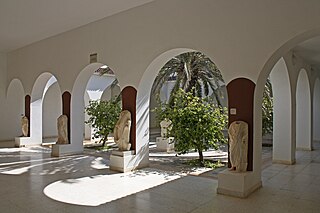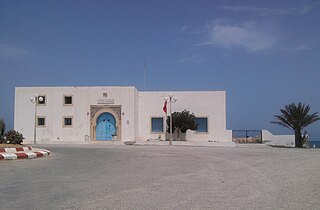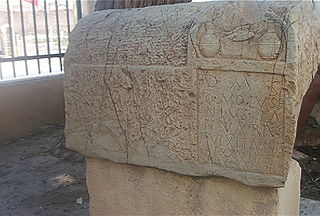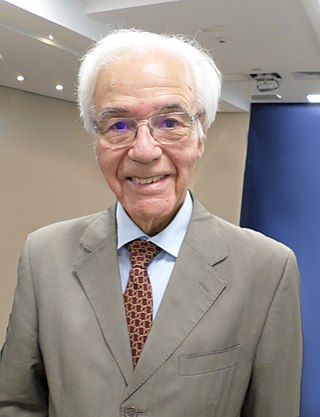 Kerkouane Archaeological Museum | |
 | |
| Location | Kerkouane, Tunisia |
|---|---|
| Type | archaeological museum |
Kerkouane Archaeological Museum is an archaeological museum located in Kerkouane, Tunisia. It contains statuary, jewelry and ceramic art. [1]
 Kerkouane Archaeological Museum | |
 | |
| Location | Kerkouane, Tunisia |
|---|---|
| Type | archaeological museum |
Kerkouane Archaeological Museum is an archaeological museum located in Kerkouane, Tunisia. It contains statuary, jewelry and ceramic art. [1]

Kerkouane or Kerkuane is the site of an ancient Punic city in north-eastern Tunisia, near Cape Bon. Kerkouane was one of the most important Punic cities, with Carthage, Hadrumetum, and Utica. This Phoenician city was probably abandoned during the First Punic War and was not rebuilt by the Romans. It had existed for almost 400 years.

Cape Bon, also known as Ras at-Taib, Sharīk Peninsula, or Watan el Kibli, is a peninsula in far northeastern Tunisia. Cape Bon is also the name of the northernmost point on the peninsula, also known as Ras ed-Dar, and known in antiquity as the Cape of Mercury or Cape Hermaeum.

Opus signinum is a building material used in ancient Rome. It is a form of Roman concrete, the main difference being the addition of small pieces of broken pot, including amphorae, tiles or brick, instead of other aggregates.

The Punic people, usually known as the Carthaginians, were a Semitic people who migrated from Phoenicia to the Western Mediterranean during the Early Iron Age. In modern scholarship, the term Punic, the Latin equivalent of the Greek-derived term Phoenician, is exclusively used to refer to Phoenicians in the western Mediterranean, following the line of the Greek East and Latin West. The largest Punic settlement was Ancient Carthage, but there were 300 other settlements along the North African coast from Leptis Magna in modern Libya to Mogador in southern Morocco, as well as western Sicily, southern Sardinia, the southern and eastern coasts of the Iberian Peninsula, Malta, and Ibiza. Their language, Punic, was a dialect of Phoenician, one of the Northwest Semitic languages originating in the Levant.

The Bardo National Museum is a museum of Tunis, Tunisia, located in the suburbs of Le Bardo.

El Djem Archaeological Museum is an archaeological museum located in El Djem, Tunisia. It contains Roman era art, including mythological personages, abstract elements and fauna.

Gafsa Archaeological Museum is an archaeological museum in Gafsa, Tunisia. It sits in the old city center. Opposite the museum are ancient Roman pools.

The Salakta Archaeological Museum is a Tunisian archaeological museum, located in Salakta. Established in 1980, it includes archaeological works from the ancient Sullectum, especially terra cotta, a mosaic pavement representing a gigantic African lion, and amphorae from other sites in the Sahel, Tunisia.
The Sfax Archaeological Museum is an archaeological museum located in Sfax, Tunisia.

The Sousse Archaeological Museum is an archaeological museum located in Sousse, Sousse Governorate, Tunisia.

The Carthage Paleo-Christian Museum is an archaeological museum of Paleochristian artifacts, located in Carthage, Tunisia. Built on an excavation site, it lies above the former Carthaginian basilica.

The Bulla Regia Museum is an archaeological museum in Bulla Regia, Tunisia.

The Chemtou Museum is an archaeological museum located in Chemtou, Tunisia. The museum was designed by archaeologists with the Tunisian National Heritage Institute and the German Archaeological Institute with offices located in Rome, Italy. It has the distinction of being located in the area of the old Roman city of Simmithu, near the entrepot's marble quarry in what was the ancient Berber kingdom of Numidia.

The Necropolis of Kerkouane is an ancient cemetery located approximately 1.5 km (0.93 mi) northwest of the Punic city of Kerkouane in northeastern Tunisia. The necropolis consists of a series of vaults set in a seaside hill, four primary chamber-tombs, and a surrounding burial area. In 1985, UNESCO declared Kerkouane and its necropolis a World Heritage Site, because "[t]he remains constitute the only example of a Phoenicio-Punic city to have survived."

Korbous is a town and commune in the Nabeul Governorate, Tunisia. As of 2004 it had a population of 3,551.

M'hamed Hassine Fantar is a professor of Ancient History of Archeology and History of Religion at Tunis University.
The Mahdia Museum is a museum in Tunisia specialising in Tunisian archaeology and heritage. It is located in the city of Mahdia.

El Brij, is a village of Tunisia, at latitude 36°48'13.44" and Longitude 10°36'8.95" on the Cape Bon peninsula near the village of Sidi Rais and Korbous. Surrounded by the Qorbus Forest and with access to beaches for the residents of Carthage, the area has been popular as a health resort since Roman times.
Sidi Raïs is a village and locality on Cape Bon in Tunisia.